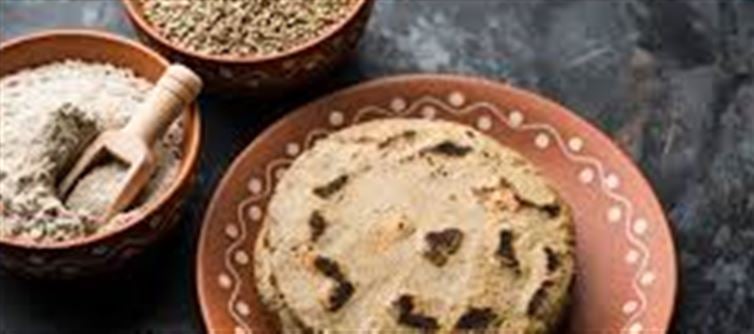
Want to stay in shape and improve heart health without giving up your favorite roti? It’s time to switch to jowar, bajra, and ragi—the ancient grains that not only add flavor but also deliver a host of health benefits. Here's why incorporating these grains into your rotis can make a real difference:
1. Promotes Weight Loss: The Fiber Power
· High Fiber Content: Jowar, bajra, and ragi are rich in dietary fiber, which helps you feel fuller for longer. This can reduce overeating and help manage your caloric intake.
· Regulates Digestion: The fiber in these grains also aids in proper digestion, preventing bloating and constipation, and boosting metabolism. A better digestive system is essential for effective weight loss.
2. heart Health: Lower Your Cholesterol
· Good for the Heart: These grains are low in saturated fat and high in unsaturated fats, making them heart-healthy alternatives to regular wheat flour. Regular consumption can lower cholesterol levels and reduce the risk of heart disease.
· Magnesium-Rich: Ragi, bajra, and jowar are excellent sources of magnesium, which is known to help in maintaining normal heart rhythm and lowering blood pressure.
3. Stable Blood sugar Levels: A Diabetes-Friendly Choice
· Low Glycemic Index: Unlike refined wheat flour, jowar, bajra, and ragi have a low glycemic index, meaning they release sugar slowly into the bloodstream. This helps in controlling blood sugar levels, making these grains ideal for those managing diabetes or trying to prevent it.
· Healthy Carb Alternative: The complex carbohydrates in these grains ensure that your body absorbs energy gradually, avoiding the sugar spikes that can lead to energy crashes.
4. Rich in Nutrients: A Nutrient-Packed Addition
· Packed with Nutrients: Jowar, bajra, and ragi are excellent sources of iron, calcium, and B-vitamins like niacin and riboflavin. These nutrients are essential for maintaining healthy bones, boosting immunity, and promoting energy production.
· Bone Health: Ragi, in particular, is known for its high calcium content, making it a perfect addition for those looking to improve bone strength and prevent osteoporosis.
5. Gluten-Free and Easy to Digest
· Gluten-Free: For those who are gluten-sensitive or suffer from celiac disease, jowar, bajra, and ragi offer a gluten-free alternative to regular wheat rotis. They’re easy to digest and provide a lighter option for those avoiding gluten in their diet.
· Less Inflammatory: These grains are less likely to cause inflammation compared to refined wheat products, promoting better overall health and reducing inflammation in the body.
How to Add These Grains to Your Rotis
Incorporating jowar, bajra, and ragi into your diet is easy. You can replace wheat flour with flours made from these grains (available in stores or homemade) to make healthier rotis. Here’s how:
· Jowar Roti: Mix jowar flour with water, knead it into a dough, and roll out to make soft, gluten-free rotis.
· Bajra Roti: Bajra flour can be mixed with warm water to make soft rotis rich in fiber and minerals.
· Ragi Roti: Simply mix ragi flour with water and a pinch of salt to create nutritious rotis packed with calcium and iron.
Conclusion: The Smart Switch for Better Health
Switching to jowar, bajra, and ragi rotis is a small change with a big impact on your health. Whether you’re looking to lose weight, improve heart health, manage blood sugar, or simply enjoy more nutrient-dense food, these grains offer a wholesome and delicious solution.
So, next time you make rotis, try incorporating these ancient grains for a healthier, more balanced diet!
Disclaimer:
The views and opinions expressed in this article are those of the author and do not necessarily reflect the official policy or position of any agency, organization, employer, or company. All information provided is for general informational purposes only. While every effort has been made to ensure accuracy, we make no representations or warranties of any kind, express or implied, about the completeness, reliability, or suitability of the information contained herein. Readers are advised to verify facts and seek professional advice where necessary. Any reliance placed on such information is strictly at the reader’s own risk.
.jpg)




 click and follow Indiaherald WhatsApp channel
click and follow Indiaherald WhatsApp channel